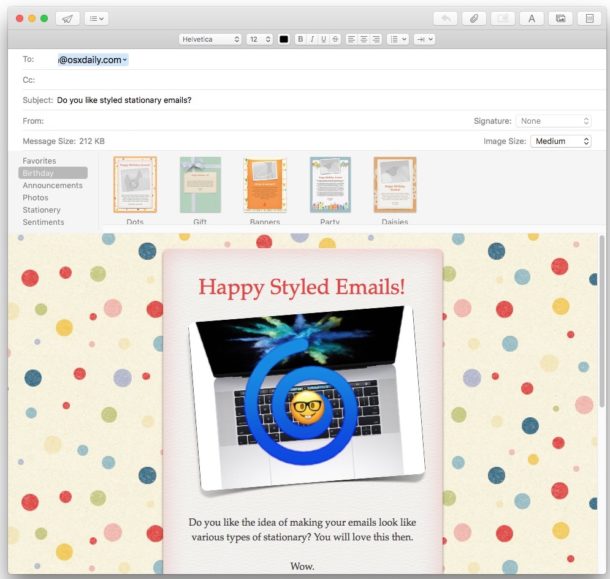- How To Create Email Stationery In Outlook
- Create Stationery For Outlook
- Microsoft Outlook Stationery Downloads
- Stationery For Outlook Email
How To Create Email Stationery In Outlook
Want all of our free Outlook videos? Download our free iPad app at http://infinit. Stationery and themes are a set of unified design elements and color schemes. They specify fonts, bullets, background color, horizontal lines, images, and other design elements that you want to include in outgoing email messages. Outlook includes a large selection of stationery. You can also design your own custom stationery. If you like visually appealing message templates called stationaries, you may want to set up Outlook to always use a particular stationery for all new messages. You can do so using the Mail Format options. Keep in mind that you can always change the stationery.

Note: If you try this procedure without HTML as your message format, the message Themes are not installed appears. • Under Choose a theme, click the theme or stationery that you want, and then click OK. • Select the font options that you want to use.
Create Stationery For Outlook
When Apple launched Mac OS X, Leopard, Mail included a feature called Stationery. Stationery is HTML-designed email templates that let you dress up the visual appearance of your email. For example, you can send emails with background pictures, emails shaped like announcements, and even emails with picture frames. Auto darkening welding helmet.
Microsoft Outlook Stationery Downloads

How do I change the format of all my new messages to HTML? • Click the File tab. • Click Options. • Click Mail. • Under Compose messages, in the Compose messages in this message format list, click HTML.
Apply Outlook stationery and themes to a single message • Click the Home tab. • In the New group, click New Items, point to Email Message Using, and then click More Stationery. • Under Choose a Theme, click the theme or stationery that you want, and then click OK. • Compose and send your message. Turn off Outlook stationery and themes • Click the File tab. • Click Options. • Click Mail.
Emoticons For Outlook 2016
• Under Compose messages, click Stationery and Fonts. • On the Personal Stationery tab, click Theme. • Under Choose a Theme, click (No Theme). Microsoft Outlook supports three message formats: • HTML This is the default message format in Outlook. It is also the best format to use when you want to create messages that are similar to traditional documents, with various fonts, colors, and bullet lists.
By default, when you select either of the options that allow formatting ( HTML or Rich Text), the message is sent in HTML format. So when you use HTML, you know that what you send is what the recipient will see. • Plain text This is a format that all email applications support. You can set Outlook to open messages that you receive in plain text format only. Plain text doesn't support bold, italic, colored fonts, or other text formatting. It also doesn't support pictures that are displayed directly in the message body, although you can include the pictures as attachments. • Outlook Rich Text format (RTF) This is a Microsoft format that only the following email applications support: • Microsoft Exchange Client versions 5.0 and 4.0 • Microsoft Office Outlook 2007 • Microsoft Office Outlook 2003 • Microsoft Outlook 2002, 2000, 98, and 97 You can use RTF when sending messages within an organization that uses Microsoft Exchange; however, we recommend that you use the HTML format.
Excel Previewer For Outlook 2016
RTF supports text formatting, including bullets, alignment, and linked objects. Outlook automatically converts RTF formatted messages to HTML by default when you send them to an Internet recipient, so that the message formatting is maintained and attachments are received. Outlook also automatically formats meeting and task requests and messages with voting buttons so that these items can be sent intact across the Internet to other Outlook users, regardless of the default format of the message.
You can create stationery using the Mail Format options. Keep in mind that you can alwayschange the stationery for individual messages.
1. On the File tab, click Options:
2. In the Outlook Options dialog box, on the Mailtab, click the Stationery and Fonts... button:
3. In the Signatures and Stationery dialog box, on thePersonal Stationary tab, click the Theme... button to choose stationery:
If you want to remove the default stationery, select the (No Theme) stationery.
4. Click OK.
When you create a new message, Outlook uses the stationery you selected as a visual template.
Note: If you need to apply a stationery to a single message, do the following:
1. On the Home tab, in the New group, clickNew Items:
Stationery For Outlook Email
2. In the New Items drop-down list, selectEmail Message Using, and then click More Stationery:
3. Under Choose a Theme, click the theme or stationerythat you want, and then click OK.
Microsoft Outlook creates a new message with the selected stationery.
See also this tip in French:Comment changer le papier à lettres dans Outlook.